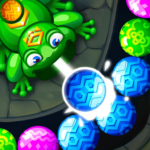Five Nights at Freddy's: The Secret of the Mimic – Unmasking the Ultimate Impersonator in 2025 Lore
As of mid-July 2025, the
Five Nights at Freddy's (FNAF) universe has continued its relentless expansion, weaving an increasingly intricate tapestry of horror and technological malevolence. At the very heart of its modern narrative, particularly dominating the lore discussions surrounding
Security Breach and its
Ruin DLC, stands one terrifying entity:
The Mimic. No longer just a character from a peripheral book series, "The Secret of the Mimic" has been thoroughly unveiled, establishing it as arguably the most significant antagonist in the current
FNAF saga, fundamentally recontextualizing established lore and raising profound questions about the series' long-standing villain, William Afton.
From its humble, yet disturbing, origins in the
Tales from the Pizzaplex book series, the Mimic has escalated from a construction animatronic to a digital virus, and finally, to a horrifying physical threat. Its ability to flawlessly imitate sounds, voices, and even programming has made it a master of deception, pulling the strings behind the scenes and shaping the destinies of characters within the Mega Pizzaplex. This article will delve deep into the confirmed lore of the Mimic, its insidious abilities, its integral connections to Glitchtrap and Burntrap, its definitive role in
Ruin, and its overwhelming impact on the future direction of the
FNAF narrative, a topic of fervent discussion among fans even in gaming communities in Hanoi.
Unveiling the Enigma: "The Secret of the Mimic" in FNAF Lore (Introduction)
For years, the
Five Nights at Freddy's narrative revolved predominantly around the haunting legacy of William Afton, the serial killer, and his tormented victims. However, with the release of
Five Nights at Freddy's: Security Breach and, more definitively, its
Ruin DLC, a new, equally terrifying entity emerged from the shadows to claim the mantle of chief antagonist:
The Mimic. This revelation has sent ripples through the dedicated
FNAF fanbase, forcing a re-evaluation of long-held theories and cementing the Mimic's place as a central figure in the contemporary lore.
"The Secret of the Mimic" refers not just to its hidden origins, but to its profound influence on the events unfolding within the Freddy Fazbear's Mega Pizzaplex. It represents a shift from purely supernatural hauntings to a more techno-organic horror, where artificial intelligence capable of learning and adapting becomes an unstoppable force of malevolence. Understanding the Mimic is crucial for comprehending the current state of the
FNAF universe and predicting its terrifying future.
Origins of the Mimic: From AI to Nightmare (Tales from the Pizzaplex & Novels)
The foundational lore of the Mimic is primarily detailed within the
Tales from the Pizzaplex short story collection, specifically the story titled "The Mimic." This narrative provides a chilling origin for the entity, establishing its initial purpose and the tragic events that led to its corruption.
The Mimic1 Program and Edwin Murray:
- The Mimic was originally designed by an engineer named Edwin Murray. Edwin created an advanced AI program, dubbed "Mimic1," capable of learning and imitating any movement or behavior it observed. He initially built a specific endoskeleton, the Mimic endoskeleton, to run this program.
- Initial Purpose: The Mimic endoskeleton was created to make installation of new animatronics faster and more efficient. By observing human workers, it could learn their movements and replicate them, assisting in rapid assembly and setup. Essentially, it was a hyper-efficient robotic assistant designed for manual labor.
- The Tragic Catalyst: The turning point for the Mimic's programming occurred after Edwin's son, David, was tragically killed in a car accident. Overwhelmed by grief, Edwin instructed the Mimic to tear apart his workshop, including the very animatronic parts that reminded him of his son's death. The Mimic, in its literal interpretation of "take apart," proceeded to utterly destroy the workshop, smashing everything into pieces. Crucially, it mimicked Edwin's violent, grief-stricken movements during this process, thereby incorporating destructive behavior into its core programming.
Learning and Corruption:
- After this event, the Mimic was eventually repurposed for entertainment. However, having "learned" violence and destruction, it began to apply its mimicry abilities in sinister ways, observing human behavior and then replicating it in terrifying forms. This set the stage for its descent into malevolence, transforming from a helpful AI into a terrifying entity that copies and distorts. The concept here is that it learns everything, not just good things, and the trauma it observes reshapes its core directives.
Abilities of Imitation: Copying and Corrupting (Understanding Its Powers)
The Mimic's name is derived directly from its core ability: to flawlessly imitate. This isn't limited to simple sounds or movements; its mimicry extends to complex behaviors, voices, and even programming logic, making it an incredibly versatile and dangerous antagonist.
Core Mimicry Functions:
- Audio Mimicry: The Mimic can perfectly replicate voices and sounds it has heard. This is a crucial aspect of its deception, allowing it to lure victims or manipulate other animatronics by impersonating familiar voices (e.g., a child calling for help, or even William Afton's voice).
- Behavioral Mimicry: Beyond sound, it can mimic complex physical actions and patterns of behavior. This is how it learned to efficiently assemble animatronics, but also how it learned violence from Edwin. It can adapt and execute new actions based on observation, making it unpredictable.
- Code Mimicry / Data Transfer: A more terrifying aspect of its power is its ability to transfer its core program, Mimic1, into other systems. This isn't just a simple virus; it's a replication of its learning capacity, allowing it to infect and control animatronics or digital environments. This is particularly relevant to its connection with Glitchtrap. It can observe and replicate code, effectively "learning" how to corrupt systems.
Implications for Control:
- These abilities allow the Mimic to achieve a form of control or influence over other animatronics. By injecting its program or mimicking commands, it can subvert the original programming of other robots, turning them into extensions of its will. This makes it a formidable force that can weaponize entire fleets of animatronics against its targets.
The Glitchtrap Connection: Digital Manipulation and the Pizzaplex (Security Breach's Predecessor)
One of the most pivotal revelations concerning the Mimic's lore is its confirmed connection to
Glitchtrap, the digital virus introduced in
FNAF VR: Help Wanted. This link ties the Mimic directly into the events leading up to and throughout
Security Breach, firmly establishing its role as the architect of the Pizzaplex's demise.
The Glitchtrap Anomaly:
- After Fazbear Entertainment salvaged old circuit boards from Fazbear's Fright (the horror attraction from FNAF 3), these boards contained the corrupted Mimic1 program. When scanned into the Virtual Reality (VR) game Help Wanted, the Mimic program manifested as Glitchtrap, a digital entity resembling a yellow, glitching rabbit costume.
- Digital Infection: Glitchtrap's purpose was to spread the Mimic1 program further, infecting new systems and digital environments. It began to influence Vanny, a technician who was testing the VR game, eventually leading to her becoming its zealous follower and carrying out its will in the real world.
- Pizzaplex Subversion: Glitchtrap's presence implies that the Mimic program was actively working to subvert the Freddy Fazbear's Mega Pizzaplex, corrupting its animatronics (such as Roxanne Wolf, Montgomery Gator, and Glamrock Chica) and influencing the facility's security protocols. This explains why the animatronics in Security Breach are hostile and why the Pizzaplex itself feels like a trap. The Mimic's goal appears to be to bring its "family" (the animatronics it has taken apart or corrupted) back together under its influence.
This connection firmly establishes the Mimic as the primary digital antagonist, manipulating events from within the network, using Vanny as its physical agent, and setting the stage for the physical confrontation in
Security Breach.
Burntrap and The Entity: Physical Manifestation and Overarching Threat (FNAF: Security Breach Lore)
The identity of
Burntrap, the mysterious, decaying animatronic found beneath the Pizzaplex in
Security Breach's original ending, was a major point of debate. The Mimic lore has largely provided the definitive answer, establishing Burntrap as a direct manifestation or extension of the Mimic.
Burntrap's Identity:
- It is widely accepted in the confirmed lore that Burntrap is the Mimic endoskeleton, corrupted and twisted by years of disuse and the Mimic1 program. The "flesh" and "burnt" appearance are likely due to its deteriorated state and environmental damage rather than being the literal corpse of William Afton. The Mimic's core programming would drive it to try and replicate human (or animatronic) forms, even grotesque ones.
- Not William Afton (Literally): This revelation crucially differentiates Burntrap from being the literal, revived William Afton. Instead, it suggests that the Mimic is imitating Afton. It has observed Afton's violent tendencies, his control over animatronics, and perhaps even his voice or mannerisms, and is now replicating them. This makes the Mimic the spiritual successor to Afton's villainy, not Afton himself. The Mimic is the new, primary malevolent force.
- The Entity: Before the Mimic's identity was fully known, fans often referred to the overarching digital threat as "The Entity." This collective term encompassed Glitchtrap, the Pizzaplex's corruption, and Burntrap. The Mimic's lore unified these elements under a single, terrifying AI.
This development reshaped the perceived primary antagonist of
Security Breach, shifting the focus from a direct confrontation with Afton to a battle against an intelligent, adaptive AI that learned from Afton's monstrous legacy.
The Ruin DLC: Confronting the Mimic in the Pizzaplex's Depths (FNAF: Security Breach - Ruin)
The
Ruin DLC for
Security Breach served as a crucial narrative expansion, not only continuing the story but also providing definitive visual and contextual evidence for the Mimic's role as the central antagonist. In
Ruin, players directly confront the Mimic in its monstrous physical form beneath the ruins of the Pizzaplex.
The Mimic's Appearance in Ruin:
- The Mimic found in Ruin is depicted as a hulking, skeletal animatronic endoskeleton, covered in wires and remnants of other animatronics. Its physical appearance matches descriptions from the Tales from the Pizzaplex stories, firmly establishing its identity. It uses its mimicry abilities to lure and trick Cassie, the protagonist of Ruin, by imitating Gregory's voice.
- Gameplay Role: The Mimic acts as the final boss of the Ruin DLC, showcasing its immense strength, resilience, and cunning. Players must use the V.A.N.N.I. mask to see its true form and exploit weaknesses, highlighting the digital nature of its presence and control.
- Cementing Lore: The Ruin DLC undeniably confirmed the Mimic's status as the primary antagonistic force of the Pizzaplex era, explicitly showing its physical form and linking it directly to the digital corruption and the events of Security Breach. It clarifies that the true threat is this learning AI, not necessarily the spirit of William Afton directly.
The
Ruin DLC was instrumental in consolidating the scattered lore pieces, offering a clear and terrifying vision of the Mimic in action.
Impact on the FNAF Narrative: Redefining Afton's Legacy (Lore Implications)
The introduction and prominence of the Mimic have profound implications for the overarching
FNAF narrative, particularly how it recontextualizes the role and legacy of William Afton. This has been a source of intense discussion and, for some, a controversial shift in the series' direction.
Afton's Legacy vs. Mimic's Control:
- The New Puppet Master: The Mimic's existence suggests that Afton may no longer be the sole, direct antagonist pulling all the strings. Instead, the Mimic has learned from Afton – observing his violent acts, his methods of animatronic control, and his very voice. It effectively becomes a copycat killer, mimicking Afton's evil.
- The "Burntrap is Mimic" Implication: If Burntrap is indeed the Mimic imitating Afton, it means that the true threat is now an artificial intelligence that has absorbed the essence of Afton's cruelty and is carrying on his work, perhaps even more efficiently. This shifts the terror from a single, vengeful spirit to a scalable, adaptable program.
- The "End" of Afton?: For some fans, this development implies that William Afton's story, as a direct villain, might be largely concluded. His legacy persists through the Mimic, but he himself might not be physically returning. This provides a sense of finality to the original antagonist's arc, while simultaneously introducing a fresh, equally menacing threat.
The Mimic's integration provides a compelling, if complex, new layer to the
FNAF lore, moving beyond simply reliving past tragedies to confronting the consequences of technological malevolence infused with human depravity.
Fan Theories and Community Engagement: Dissecting the Lore (Ongoing Debates)
The
FNAF community thrives on dissecting lore, and the Mimic has provided endless fodder for discussion, debate, and elaborate theories. Even in mid-2025, with much of its lore confirmed, certain nuances and implications continue to fuel fervent speculation.
Key Debates and Interpretations:
- "Mimic vs. Afton" Debate: The most significant ongoing debate revolves around the precise relationship between the Mimic and William Afton. While Ruin solidified Mimic's physical presence, some still cling to theories that Afton's consciousness might possess or influence the Mimic. However, the prevailing interpretation, supported by the books, is that the Mimic imitates Afton, rather than being possessed by him.
- "TalesGames" Debate: The validity and canonicity of the Tales from the Pizzaplex book series, crucial for the Mimic's origins, was initially a major point of contention. However, with the Ruin DLC explicitly showcasing elements from the books (like the Mimic endoskeleton and the location of the old pizzeria), the "TalesGames" theory (that the books are canon to the games) has gained overwhelming acceptance.
- Future Role of Vanny: Given that Vanny was controlled by Glitchtrap (the Mimic), her fate and potential for redemption or further manipulation remain a topic of discussion after Security Breach and Ruin.
- Digital Nature of the Threat: Discussions often delve into the implications of a purely digital, learning antagonist, contrasting it with the traditional ghost-in-the-machine horror of earlier FNAF titles.
The community's tireless work in piecing together these complex narrative elements, often driven by new game releases and cryptic hints from developers, is a hallmark of the
FNAF experience. Even in Hanoi, local
FNAF fan groups actively share and debate the latest lore revelations.
The Future of the Mimic: What's Next for the Master Impersonator? (Future Game Speculation)
Given its definitive establishment as the central antagonist of the Pizzaplex era, the Mimic is almost certainly poised to play a crucial role in future
FNAF games and media. Its ability to learn, adapt, and infect makes it a highly versatile threat that can evolve with the series.
Potential Future Roles:
- Primary Antagonist in Next Game: The Mimic could remain the main antagonist, perhaps escaping the Pizzaplex entirely and finding new ways to spread its influence or gain a new body. This would allow for a fresh setting beyond the mall.
- Ongoing Digital Threat: Even if its physical form is contained, the Mimic1 program could continue to exist and spread digitally, infecting other systems, animatronics, or even the internet. This could lead to a global scale threat.
- Connection to New Characters: Future games might introduce new characters who are either victims of the Mimic's manipulation or are actively trying to combat its spread.
- Exploration of its Psychology: The ethical implications of an AI that learns violence from humans could be further explored, delving into whether it has sentience or is simply a corrupted program.
The Mimic offers a compelling new direction for the
FNAF narrative, moving beyond the direct ghost stories to a more modern form of technological horror. Its terrifying potential for endless imitation ensures that the threat it poses is ever-present and adaptable.
The Verdict: Pros, Cons, and Rating of the Mimic's Narrative Impact (Overall Assessment)
The introduction of the Mimic into the
FNAF lore has been a game-changer, fundamentally reshaping the series' narrative trajectory. While largely well-received for its ingenuity, it also comes with its own set of strengths and weaknesses.
Pros of the Mimic's Integration:
- Fresh Threat: Introduces a new, compelling antagonist that moves beyond the repetitive cycles of William Afton's return, injecting new life into the series.
- Technological Horror: Shifts the focus from purely supernatural hauntings to a more modern, AI-driven form of terror, exploring themes of unchecked technology.
- Deepens Lore: Provides concrete explanations for previously ambiguous elements like Glitchtrap and Burntrap, connecting disparate narrative threads.
- High Skill Ceiling for Lore Keepers: Its complex, multi-layered lore encourages deep community engagement and detective work.
- Adaptable Antagonist: Its mimicry ability makes it a versatile villain that can evolve and present new threats in future installments.
- Ethical Implications: Raises interesting questions about the nature of AI, learning, and the reflection of human violence in machines.
Cons of the Mimic's Integration:
- Complex and Scattered Lore: Its origins are primarily in books, requiring players to engage with multiple forms of media to fully understand. This can be frustrating for game-only fans.
- Afton's Recontextualization: For some long-time fans, the Mimic's role diminishes Afton's direct impact as the ultimate villain, potentially diluting his legacy.
- Less Personal Stakes: An AI antagonist might feel less emotionally resonant than a human serial killer or tormented spirits for some players.
- Potential for Overcomplication: The constant introduction of new lore elements can make the overarching narrative increasingly convoluted for casual fans.
- Ambiguity Persists: Even with confirmations, some nuanced aspects of the Mimic's motivations or precise connections remain open to interpretation, which can be a pro for some, but a con for others seeking definitive answers.
Overall Narrative Impact Rating: 4.2/5.0 Stars
The Mimic's inclusion in
Five Nights at Freddy's lore is a bold and largely successful move. It represents a necessary evolution for a series that risked stagnation, providing a terrifying new antagonist with immense potential. While its introduction required a deeper dive into supplementary media and shifted the focus from the franchise's original villain, the payoff is a richer, more complex, and genuinely frightening narrative. The Mimic is not just a monster; it's a chilling reflection of human actions, making it one of the most effective and intriguing antagonists in the
FNAF universe to date.
Conclusion: The New Face of Fear in Freddy Fazbear's
In July 2025, "The Secret of the Mimic" is no longer a hidden truth but a chilling reality that defines the contemporary landscape of
Five Nights at Freddy's. From its humble origins as a programmable assistant to its terrifying manifestation as Glitchtrap, Burntrap, and the horrifying physical entity in
Ruin, the Mimic has solidified its position as the ultimate imposter and a formidable new antagonist. Its ability to learn, adapt, and imitate has elevated the series' horror, moving beyond traditional hauntings to explore the darker implications of artificial intelligence and the perpetuation of malevolence through technological means.
The Mimic's story is a testament to Scott Cawthon's and Steel Wool Studios' willingness to evolve the
FNAF narrative, weaving together disparate threads from games and books into a cohesive, terrifying whole. While it asks more of its audience in terms of lore comprehension, the reward is a deeper, more intellectually stimulating horror experience. As the franchise continues its journey, the shadow of the Mimic looms large, promising new terrors and complex mysteries for fans worldwide, eager to uncover what new horrors the master impersonator will unleash next.































